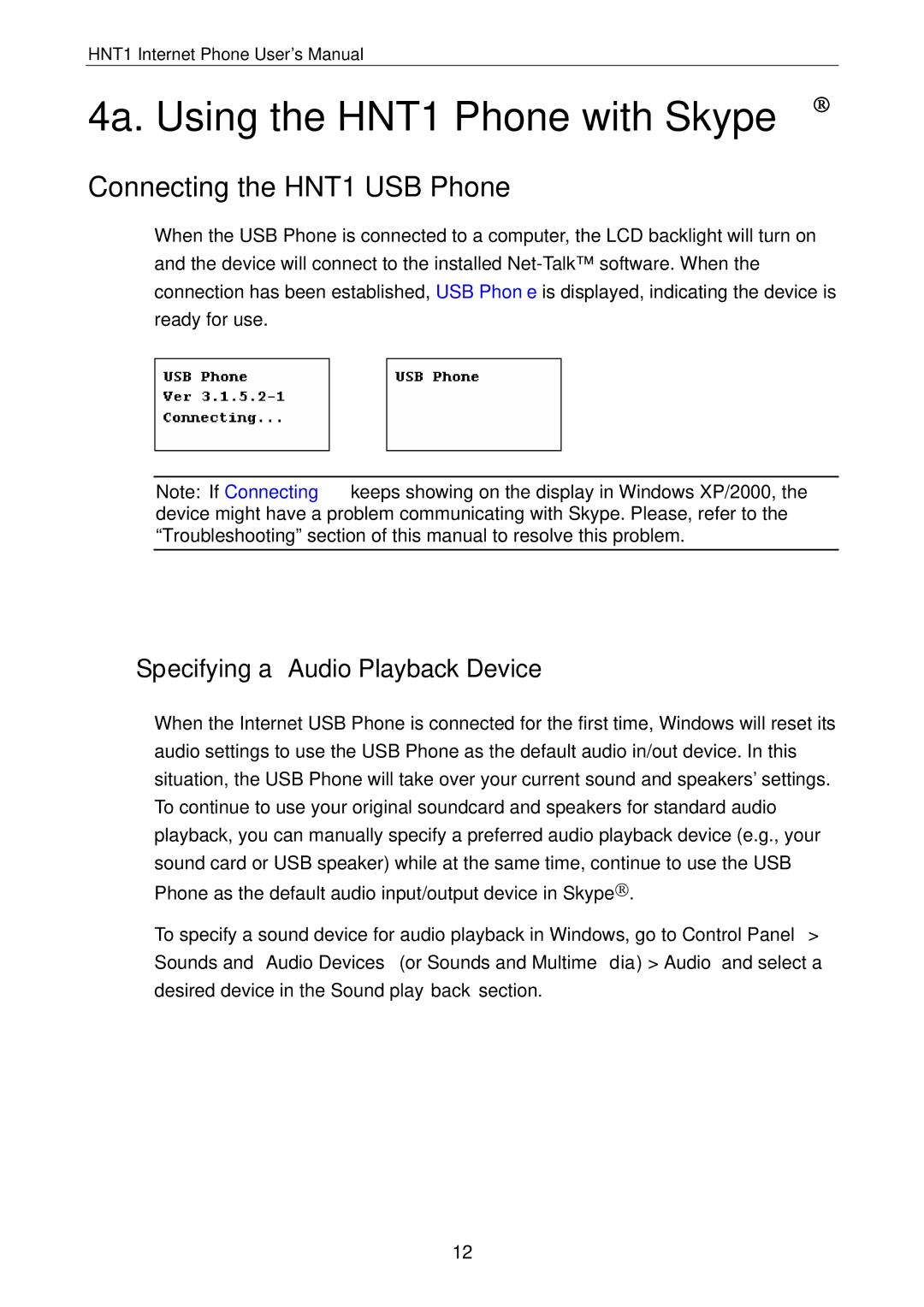HNT1 specifications
Hawking Technology HNT1 is a robust multi-functional networking device designed to enhance wireless connectivity and expand network coverage. With an emphasis on reliability and versatility, this exemplary product is tailored for both home and small office environments.One of the main features of the HNT1 is its advanced wireless technology. Utilizing the latest Wi-Fi standards, it supports dual-band operation at 2.4GHz and 5GHz, allowing users to enjoy faster speeds and improved performance across devices. This dual-band capability effectively reduces interference and enhances signal strength, making it an ideal choice for streaming, gaming, and other bandwidth-intensive applications.
The HNT1 is also equipped with multiple Ethernet ports, facilitating wired connections for devices that require stable and high-speed internet access. These ports allow for a flexible network setup, catering to both wired and wireless needs. Additionally, the device supports Power over Ethernet (PoE), which simplifies installation by eliminating the need for a separate power supply for connected devices.
Security is a top priority for Hawking Technology, and the HNT1 reflects this commitment. It features advanced encryption protocols, including WPA3, ensuring that users' data remains protected from unauthorized access. The firewall capabilities further enhance the device’s security, providing a safe browsing experience.
The HNT1 boasts a user-friendly interface, which simplifies setup and management. Users can easily configure the device through a web-based interface or a mobile app, providing convenient access to advanced features such as Quality of Service (QoS) settings, guest network configurations, and parental controls. These features allow users to manage their network effectively, controlling bandwidth allocation and ensuring a safe online environment for children.
The design of the HNT1 is both sleek and functional, ensuring that it blends seamlessly into any home or office decor. Its compact form factor allows for easy placement in various environments, and its durable construction stands up to daily use.
In summary, Hawking Technology HNT1 is a versatile networking solution that combines advanced wireless technology, robust security features, and user-friendly management tools. Its dual-band capability, multiple Ethernet ports, and commitment to security make it an excellent choice for anyone looking to enhance their network experience at home or in a small office setting. With the HNT1, users can enjoy a seamless and reliable internet experience, tailored to their specific connectivity needs.

